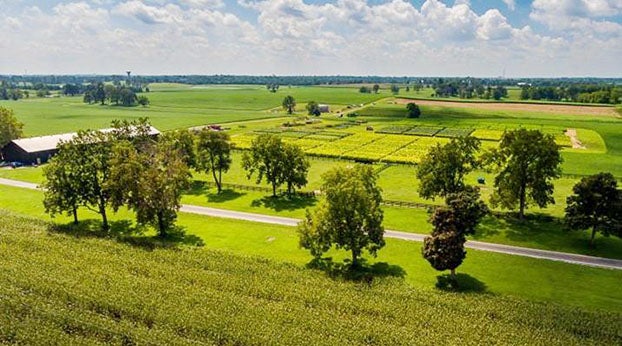Farmers given credit for soil, water improvements
Published 12:16 pm Thursday, January 4, 2018
FRANKFORT—Farmers deserve at least some of the credit for reducing pollutants in Kentucky’s water supply, the co-chair of a state legislative committee says.
Tobacco Settlement Agreement Fund Oversight Committee Co-Chair Rep. Myron Dossett, R-Pembroke, praised farmers for helping to lower the amount of so-called nutrient pollutants like nitrogen and phosphorus in Kentucky’s water following a presentation by the Kentucky Division of Conservation before the committee today.
Dossett pointed to the division’s own statements that less nitrogen and phosphorus is being detected in Kentucky’s waterways. Nitrogen and phosphorus are common ingredients in fertilizer, which is commonly used to grow crops.
“I see it so many times just in my home area. Our farmers … they don’t work all the way down into the creek banks,” to help prevent pollutants from leaching into creeks and streams, said Dossett. “We owe them a debt of gratitude for helping on that.”
Division of Conservation Director Kimberly Richardson agreed with Dossett that farmers and landowners play a big role in protecting the state’s soil and water. She said $147.2 million has gone into the agency’s state cost share program to help farmers and landowners improve soil and water quality on Kentucky land since 1994. Of that total, $126.5 million has come from Kentucky’s tobacco settlement agreement funds.
Stream crossings that protect water from equipment and livestock, fencing, and restoration of pasture and hay land—especially in drought years, most recently in 2012—are among projects funded in past years.
“They are the original environmentalists,” Richardson said of Kentucky’s farmers. “They want to pass their land along, they want to pass their waters along, and they want it to be better than when they got it.”
Richardson said 1,845 applications for cost share assistance totaling over $14 million were submitted this fiscal year, with 1,201 of those applications approved.
The Division of Conservation’s state cost share program has received 52,000 applications for assistance from farmers since 1994, she said, with over 17,948 applications approved totaling over $155 million in assistance.
The agency also provides environmental grants to the state’s 121 conservation districts, she said, and assists landowners who need help complying with state Division of Water protocols. This fiscal year, at least 136 environmental grants were approved, said Richardson.
“Districts are able to come up with unique programs for things such as soil testing, metal recycling—maybe it’s cover crops, river clean-ups, whatever becomes a local issue in your community” using the grants, said Richardson. She emphasized that the grants fund local priorities, not state or federal mandates.
When asked by Sen. Robin Webb, D-Grayson, about federal funds for state conservation programs, Richardson said her agency expects federal cuts as does the Natural Resources Conservation Service or NRCS, a federal agency that provides technical assistance to her agency.
“I think we’re going to be in general seeing a decrease,” said Richardson. “We are working toward a couple of different avenues to address that loss of technical assistance” from the NRCS. One solution may come from the National Association of Conservation Districts or NACD, which Richardson said is offering technical assistance grants.
“We have one application in for that, and that looks to be some guaranteed funding,” said Richardson.
Kentucky has a conservation district for each of the state’s 120 counties, with Logan County divided into two districts. Each district is governed by a local board of supervisors elected by local voters.




